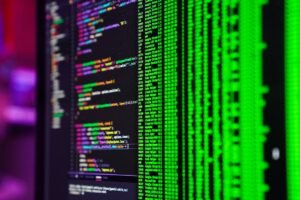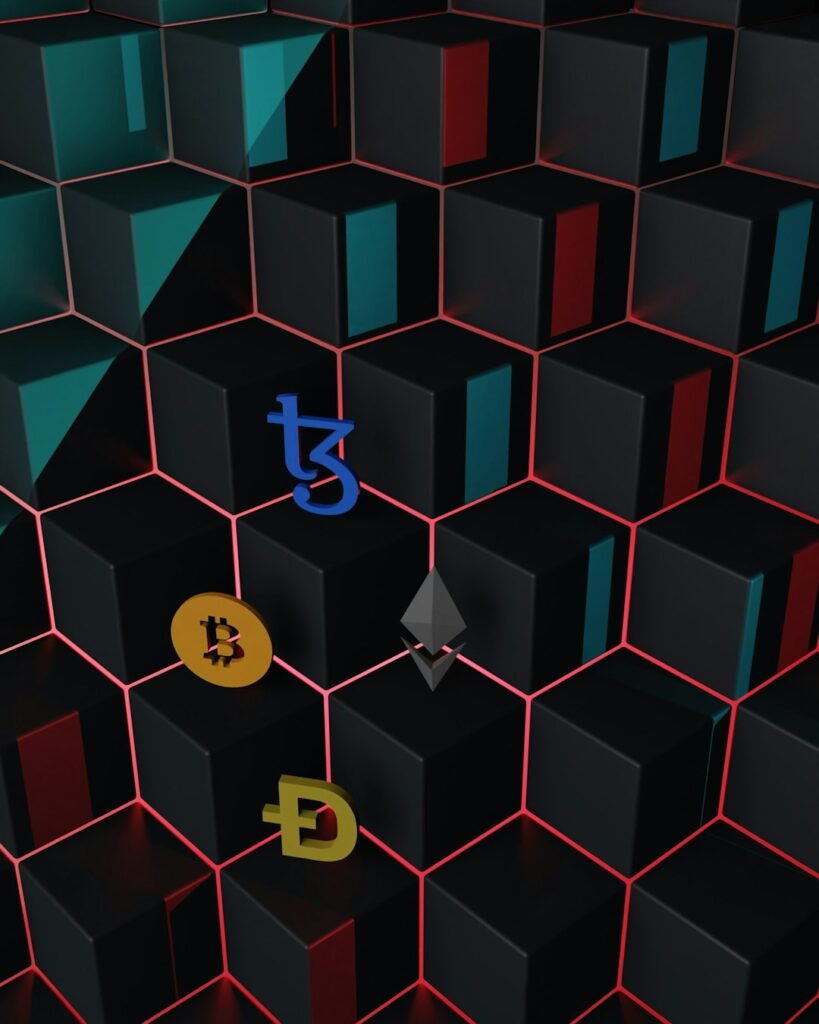الرابط الذي لا ينفصم: كيف تقوم DeFi و Web3 ببناء مستقبل مالي لا مركزي
تميز تطور الإنترنت بمراحل متميزة. قدم الويب 1.0 صفحات ثابتة - كتيبات رقمية. وجلب الويب 2.0 التفاعلية والتواصل الاجتماعي والمحتوى الذي ينشئه المستخدم، ولكن السلطة المركزية في أيدي عدد قليل من عمالقة التكنولوجيا. والآن، نحن نقف على عتبة الويب 3.0نقلة نوعية واعدة بإنترنت أكثر ذكاءً ومملوكة للمستخدمين ولا مركزية بشكل أساسي. يكمن في قلب هذا التحول التمويل اللامركزي (DeFi)ليس فقط كتطبيق، ولكن كمحرك مالي أساسي يدعم رؤية Web3. فالعلاقة بينهما عميقة ولا يمكن فصلها.
فهم الركائز: تعريف الويب 3.0 وDFi
ما هو الويب 3.0؟
غالبًا ما يُطلق عليه "الويب 3.0" أو "الويب اللامركزي"، ويمثل الويب 3.0 الجيل الثالث للإنترنت. فهو يتجاوز الصفحات الثابتة والمنصات التفاعلية نحو نظام يتسم بـ:
- الفهم الدلالي: يمكن للآلات فهم المعلومات في سياقها، مما يتيح عمليات بحث أكثر ذكاءً وتجارب مخصصة للغاية. تصبح البيانات ذات مغزى، وليس فقط حاضرة.
- اللامركزية: هذا هو المبدأ الأساسي. فبدلاً من أن تكون البيانات والتحكم في البيانات في يد السلطات المركزية (مثل شركات التواصل الاجتماعي أو مزودي الخدمات السحابية)، تستفيد الويب 3.0 من تقنيات مثل البلوك تشين لتوزيع الملكية والحوكمة. يستعيد المستخدمون السيطرة.
- قابلية التشغيل البيني: كسر الصوامع أمر بالغ الأهمية. يهدف Web 3.0 إلى التفاعل السلس بين المنصات والتطبيقات وسلاسل الكتل المختلفة، مما يسمح بتدفق البيانات والقيمة بحرية.
- تمكين المستخدم: يمتلك المستخدمون بياناتهم، ويتحكمون في هوياتهم الرقمية، ويشاركون مباشرة في الشبكات التي يستخدمونها. يتم تعزيز الخصوصية والأمان من خلال التصميم.
تشمل التقنيات الرئيسية التي تُمكِّن الويب 3.0 الذكاء الاصطناعي (AI) للذكاء والتخصيص، وسلسلة الكتل (Blockchain) للثقة واللامركزية، وإنترنت الأشياء (IoT) لتكامل البيانات في العالم الحقيقي، والواقع الممتد (XR) للتجارب الغامرة. لا تزال هناك تحديات مثل قابلية التوسع، ووضع معايير للتشغيل البيني، وتجاوز المشهد التنظيمي المتطور.
ما هو التمويل اللامركزي (DeFi)؟
DeFi هي حركة ثورية تعيد بناء الخدمات المالية التقليدية (الإقراض والاقتراض والتداول والاستثمار والتأمين) على سلاسل الكتل العامة، وعلى رأسها الإيثيريوم. فهي تزيل الوسطاء مثل البنوك والوسطاء والبورصات وتستبدلهم ببروتوكولات شفافة وقابلة للبرمجة تحكمها التعليمات البرمجية والمجتمع. مبادئها الأساسية هي
- اللامركزية: تعمل على شبكات موزعة؛ لا توجد نقطة تحكم أو فشل واحدة.
- إمكانية الوصول: متاح لأي شخص على مستوى العالم لديه اتصال بالإنترنت ومحفظة تشفير، متجاوزًا بذلك الحراسة التقليدية والقيود الجغرافية.
- الشفافية: يتم تسجيل جميع المعاملات بشكل غير قابل للتغيير على سلاسل الكتل العامة، ويمكن لأي شخص تدقيقها.
- العقود الذكية: تعمل التعليمات البرمجية ذاتية التنفيذ على أتمتة الاتفاقيات (مثل القروض والصفقات)، مما يزيل الاعتماد على أطراف ثالثة موثوق بها ويقلل من الاحتكاك/التكاليف.
- قابلية التشغيل البيني: صُممت البروتوكولات لتعمل معًا ("ليغو المال")، مما يتيح خدمات مالية معقدة مبنية من خلال الجمع بين لبنات بناء DeFi الأبسط.
تشمل المكونات الرئيسية لنظام DeFi البيئي ما يلي:
- البورصات اللامركزية (DEXs): مثل Uniswap أو SushiSwap، مما يسمح بتداول العملات الرقمية من نظير إلى نظير بدون وصي مركزي.
- منصات الإقراض والاقتراض: مثل Aave أو Compound، حيث يمكن للمستخدمين إقراض الأصول لكسب الفائدة أو الاقتراض من خلال تقديم ضمانات مشفرة.
- العملات المستقرة ترتبط العملات الرقمية المشفرة بأصول مستقرة (مثل الدولار الأمريكي - USDC، وDAI، وUSDT)، مما يوفر استقرارًا في الأسعار وهو أمر ضروري للمعاملات اليومية وعمليات DeFi.
- زراعة الغلة: الاستراتيجيات التي يوفر فيها المستخدمون السيولة للبروتوكولات (على سبيل المثال، إيداع التوكنات في مجمع إقراض أو مجمع سيولة DEX) لكسب المكافآت، وغالبًا ما تكون في شكل توكنات إضافية.
- المنظمات المستقلة اللامركزية (DAOs): المنظمات التي يحكمها المجتمع حيث يتخذ أصحاب الرموز بشكل جماعي قرارات بشأن تطوير البروتوكول وخزينته ومستقبله.
لماذا الرابط الذي لا ينفصم؟ DeFi كطبقة مالية لـ Web3
يتصور Web3 إنترنت لامركزي يركز على المستخدم. التمويل هو جانب أساسي في أي نظام بيئي. يتعارض التمويل المركزي التقليدي (CeFi) مع المبادئ الأساسية لـ Web3. يوفر DeFi النظام المالي المحلي لهذه الشبكة الجديدة
- التوافق مع المبادئ الأساسية: كل من Web3 و DeFi مبنيان على أساس اللامركزية والشفافية وتحكم المستخدم. تقوم DeFi بتفعيل هذه المبادئ على وجه التحديد للتفاعلات المالية داخل مساحة Web3. لا يمكن أن يكون لديك Web3 لامركزي حقًا يعمل على نظام مالي مركزي.
- تمكين ملكية المستخدم والتحكم في المستخدم: في Web3، يمتلك المستخدمون بياناتهم وأصولهم الرقمية (NFTs)، وربما حتى أجزاء من المنصات التي يستخدمونها (عبر الرموز المميزة). يوفر DeFi الأدوات التي تمكن المستخدمين من التحكم و الاستفادة هذه الأصول من الناحية المالية:
- الوصاية الذاتية: يحتفظ المستخدمون بأصولهم المشفرة في محافظهم الخاصة (غير المودعة في حراسة)، وليس في البورصات أو البنوك. تتفاعل بروتوكولات DeFi مباشرة مع هذه المحافظ المملوكة للمستخدمين.
- تحقيق الدخل من الأصول: يمكن للمستخدمين الاستفادة من ممتلكاتهم من العملات المشفرة داخل DeFi - إقراضها لكسب العائد، أو استخدامها كضمان للاقتراض، أو توفير السيولة لكسب الرسوم.
- نقود قابلة للبرمجة: تتيح العقود الذكية إمكانية إبرام اتفاقيات مالية معقدة ومؤتمتة مباشرةً بين المستخدمين، وهو ما يتماشى تمامًا مع إمكانات Web3 القابلة للبرمجة والآلية.
- الوصول بدون إذن والشمول العالمي: يهدف Web3 إلى أن يكون مفتوحًا وسهل الوصول إليه. تقدم DeFi هذا من الناحية المالية. يمكن لأي شخص في أي مكان لديه اتصال بالإنترنت الوصول إلى خدمات DeFi دون الحاجة إلى موافقة من أحد البنوك أو التحقق من الائتمان أو الإقامة في بلد معين. هذا يعزز بشكل غير مسبوق الشمول المالي.
- الشفافية والثقة من خلال الكود: تستفيد Web3 من سلسلة الكتل للبيانات والعمليات التي يمكن التحقق منها. تستفيد DeFi من البلوك تشين (وتحديدًا العقود الذكية) للمعاملات المالية والمنطق القابل للتحقق منها. تتحول الثقة من المؤسسات غير الشفافة إلى شفافية وشفافية قابلة للتدقيق. يتم تسجيل كل معاملة أو دفع فائدة أو تغيير مجمع السيولة بشكل ثابت على السلسلة.
- قابلية التركيب ("ليغو المال"): السمة المميزة لكل من Web3 و DeFi هي قابلية التركيب. تم تصميم بروتوكولات DeFi لتكون معيارية وقابلة للتشغيل البيني. يمكنك بسلاسة استخدام مخرجات أحد البروتوكولات (على سبيل المثال، قرض من Aave) كمدخلات لبروتوكول آخر (على سبيل المثال، توفير السيولة على Uniswap). وهذا يعزز الابتكار السريع وإنشاء الخدمات المالية المعقدة مباشرةً داخل نظام Web3 البيئي، وهو أمر مستحيل داخل صوامع التمويل التقليدية.
- الحوافز الاقتصادية والحوكمة المجتمعية: غالبًا ما يستخدم Web3 الحوافز القائمة على الرمز المميز وحوكمة DAO. وتعد DeFi هي حالة الاستخدام الرائدة والأساسية لهذا النموذج. تحفز الرموز المميزة المشاركة (توفير السيولة، والاقتراض، والحوكمة)، وتمنح DAOs المستخدمين حصة مباشرة ورأيًا في تطور البروتوكولات المالية التي يستخدمونها. يؤدي ذلك إلى إنشاء شبكات مالية متوائمة يقودها المجتمع.
الفوائد الملموسة: قوة DeFi في عالم الويب 3
يوفر دمج بروتوكولات DeFi في نسيج Web3 مزايا ملموسة:
- انخفاض التكاليف: إن إزالة الوسطاء (البنوك والوسطاء) يقلل بشكل كبير من رسوم المعاملات والإقراض والاقتراض والتداول. تحدد الدراسات (مثل مركز كامبريدج للتمويل البديل الذي وجد أن مستخدمي DeFi وفروا حوالي 1.31 تيرابايت من الرسوم مقابل البورصات التقليدية في عام 2020) هذه المدخرات.
- زيادة إمكانية الوصول والشمول المالي: يمكن للمليارات من غير المتعاملين مع البنوك أو الذين لا يملكون حسابات مصرفية أو لا يملكون حسابات مصرفية كافية الوصول إلى المدخرات والقروض وأدوات الاستثمار ببساطة عن طريق الاتصال بالإنترنت.
- تعزيز الشفافية: كل إجراء مالي يكون مرئيًا على سلسلة الكتل، مما يقلل من احتمالات الاحتيال وبناء الثقة النظامية.
- أمان محسّن (معماري): على الرغم من وجود مخاطر العقود الذكية، إلا أن أسس التشفير في البلوك تشين وطبيعتها الموزعة تجعل البنية التحتية الأساسية مقاومة للغاية لنقاط الفشل الفردية والاختراقات التقليدية التي تستهدف قواعد البيانات المركزية.
- سيادة المستخدم: تحكم غير مسبوق في الأصول الشخصية والقرارات المالية.
- الابتكار والنماذج المالية الجديدة: تتيح قابلية التركيب منتجات وخدمات مالية جديدة تمامًا (مثل القروض السريعة والعملات المستقرة الخوارزمية واستراتيجيات العائد المعقدة) التي هي أصلية في العالم الرقمي ومستحيلة في CeFi.
- نظام بيئي مفتوح وقابل للتشغيل البيني: يعزز التعاون ويتيح للمستخدمين نقل الأصول والقيمة بسلاسة بين تطبيقات وخدمات Web3 المختلفة.
- الحوكمة المجتمعية: مواءمة تطوير البروتوكول مع احتياجات المستخدم من خلال DAOs، مما يجسد روح Web3 الديمقراطية.
المشهد المتطور: الاتجاهات التي تشكل Web3 & DeFi
يستمر التآزر بين Web3 وDFi في دفع عجلة الابتكار:
- التكامل عبر المنصات المتعددة: توقع تفاعلًا سلسًا أعمق بين تطبيقات DApps (التطبيقات اللامركزية) المتنوعة، مما يخلق تجارب موحدة للمستخدمين عبر الويب اللامركزي وخدماته المالية. تتدفق هويتك وأصولك وأنشطتك المالية دون عناء.
- التدابير الأمنية المعززة: مع تزايد الاعتماد على هذه الحلول، سيزداد التركيز على تحسين الأمن - ستصبح حلول الهوية اللامركزية المتقدمة، وإثباتات المعرفة الصفرية للخصوصية، والحساب الآمن متعدد الأطراف معيارًا قياسيًا.
- الأتمتة الذكية عبر الذكاء الاصطناعي/التعلم الآلي: سيتم دمج الذكاء الاصطناعي والتعلم الآلي في نظام DeFi لتقييم المخاطر بشكل أكثر ذكاءً وتحليل السوق آليًا واستراتيجيات العائد المُحسّنة والمشورة المالية المخصصة داخل منصات Web3.
- خدمات مالية مخصصة: سيؤدي الذكاء الاصطناعي/التعلّم الآلي إلى إضفاء طابع شخصي مفرط في مجال التمويل عبر الويب 3، وتكييف استراتيجيات الاستثمار وشروط القروض ومنتجات التأمين مع ملفات تعريف المستخدمين وسلوكياتهم الفردية.
- نضوج DAOs: ستصبح هياكل حوكمة DAO أكثر تطوراً ومعترفاً بها قانونياً، وستلعب دوراً محورياً ليس فقط في قرارات بروتوكول DeFi ولكن من المحتمل أن تلعب دوراً محورياً في إدارة مجتمعات وموارد Web3 الأوسع نطاقاً.
- التطور التنظيمي: سيكون للحوكمة المجتمعية وتعاون الصناعة دور حاسم في تشكيل أطر تنظيمية معقولة تحمي المستخدمين دون خنق الابتكار في هذه الحدود اللامركزية. سيكون التركيز على الامتثال من خلال التكنولوجيا (على سبيل المثال، حلول "اعرف عميلك" اللامركزية) بدلاً من إعادة إنشاء اختناقات مركزية.
الخاتمة: مستقبل تكافلي
إن Web3 و DeFi ليسا مجرد اتجاهين متجاورين؛ فهما متشابكان بشكل أساسي. يوفر Web3 البنية التحتية اللامركزية والفلسفة المتمحورة حول المستخدم، في حين أن DeFi يوفر الطبقة المالية الأساسية الأصلية التي تجعل هذا الإنترنت الجديد قابلاً للتطبيق اقتصاديًا وتمكينيًا حقًا.
DeFi هي الآلية التي يتم من خلالها تخزين القيمة ونقلها واستعارتها وإعارتها وإقراضها وتنميتها داخل نظام Web3 البيئي. وهي تجسد مبادئ الشفافية وسهولة الوصول وتحكم المستخدم التي تحدد وعد Web3. بدون DeFi، فإن Web3 يخاطر بتكرار التبعيات المالية المركزية للويب 2. بدون السياق الأوسع والبنية التحتية للويب 3، تظل DeFi تجربة مالية قوية ولكنها معزولة.
يعمل تقاربهم على بناء مستقبل رقمي أكثر انفتاحًا وشمولاً وفعالية وملكية للمستخدمين - مستقبل يتم فيه نسج الويب المالي بسلاسة في نسيج الإنترنت اللامركزي نفسه. تتضمن الرحلة اجتياز العقبات التقنية والتعقيدات التنظيمية، ولكن المسار واضح: يرتبط كل من DeFi وWeb3 ارتباطًا وثيقًا، ويتطوران معًا لإعادة تعريف كيفية تفاعلنا مع الإنترنت وأموالنا. يتم بناء المستقبل المالي اللامركزي الآن.












